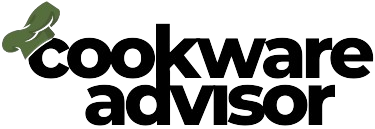Meat slicers have become an indispensable tool in the kitchen, offering convenience and precision when slicing various types of meats, cheeses, and other foods. Many culinary enthusiasts, deli owners, and chefs rely on meat slicers to achieve consistent and professional results.
However, the question often arises: can meat slicers handle raw meat safely? In this comprehensive blog post, we will delve deeper into the subject, providing you with all the necessary information to make informed decisions and ensure the safe usage of meat slicers with raw meat.
Understanding the Meat Slicer
Meat slicers, also known as deli slicers or slicer machines, come in various types, including manual, automatic, and semi-automatic models. They consist of a razor-sharp rotating blade mounted on an adjustable platform, allowing users to control the thickness of the slices. The primary components of a meat slicer include the blade, carriage, gauge plate, food holder, and safety guard.
The blade is arguably the most crucial part of the slicer, responsible for slicing through meats with precision. It is essential to keep the blade sharp and well-maintained to ensure efficient cutting and reduce the risk of accidents.
Can Meat Slicers Safely Cut Raw Meat?
The short answer is yes; meat slicers can cut raw meat safely, but there are important considerations to keep in mind to ensure the process is done safely and hygienically. Let’s explore them.
a. Cleanliness and Sanitization:
Proper cleaning and sanitization of the meat slicer are crucial to prevent the risk of cross-contamination. Raw meats carry harmful bacteria, such as E. coli and Salmonella, which can easily spread to other foods if the slicer is not thoroughly cleaned after each use. Before and after slicing raw meat, dismantle the slicer as per the manufacturer’s guidelines and wash all removable parts with hot, soapy water. Sanitize the slicer components using a food-safe sanitizer to ensure all bacteria are eliminated.
b. Proper Slicer Design:
The design of the meat slicer is a significant factor in determining its suitability for cutting raw meat. Commercial-grade slicers are specifically engineered to handle raw meat safely, featuring smooth, stainless steel surfaces that are easy to clean and sanitize. The parts of a commercial slicer can be easily removed for thorough cleaning, reducing the risk of bacterial buildup. If using a home meat slicer, ensure that it is explicitly designed for slicing raw meats, and always follow the manufacturer’s guidelines for proper maintenance.
c. Quality of the Meat:
The quality and freshness of the meat used for slicing are essential. Choose fresh, high-quality cuts of meat from reputable sources. Avoid using meat that shows signs of spoilage, such as an off odor, slimy texture, or discoloration. Using subpar meat can not only compromise the flavor and texture of the slices but also increase the risk of foodborne illnesses.
d. Cold Meat Slicing:
When slicing raw meat, it is advisable to work with cold or slightly frozen meat. Cold meat is firmer and easier to handle, reducing the likelihood of the meat tearing or shredding during the slicing process. If the meat is partially frozen, it will retain its shape better, allowing for more consistent slices.
Safety Precautions
To ensure safe operation when slicing raw meat, follow these essential safety precautions:
a. Use Cut-Resistant Gloves:
Always wear cut-resistant gloves when handling raw meat on the slicer. These gloves provide an extra layer of protection against accidental cuts or nicks from the sharp blade.
b. Maintain Safe Distances:
Keep your hands and fingers away from the blade at all times. Use the food holder or pusher provided with the slicer to feed the meat towards the blade, ensuring a safe distance from the cutting area. In addition, many meat slicers come equipped with a safety guard that covers the blade when not in use.
c. Avoid Cross-Contamination:
To prevent cross-contamination, designate specific slicers for slicing raw meats and others for slicing non-meat items like cheeses and vegetables if you need to switch between different types of meats, thoroughly clean and sanitize the slicer between uses.
e. Follow the Manufacturer’s Guidelines:
Every meat slicer model comes with specific instructions from the manufacturer regarding safe use and maintenance. Read the user manual thoroughly and follow all guidelines to ensure the safe and effective operation of the slicer.
Final Words
Meat slicers can indeed cut raw meat safely, provided that you take the necessary precautions and follow strict hygiene and safety measures. From choosing the right type of slicer to maintaining cleanliness and sanitization, every step in the process plays a crucial role in ensuring safe slicing practices.
Remember to invest in a slicer that is specifically designed for cutting raw meats, and always prioritizes quality and freshness when selecting the meat to slice. Follow the manufacturer’s guidelines for proper cleaning, maintenance, and safety precautions to enjoy the benefits of perfectly sliced meats without compromising on safety.
By adhering to these recommendations, you can confidently use a meat slicer to handle raw meats in your kitchen, elevating your culinary creations and streamlining your food preparation process. Embrace the convenience and precision that meat slicers offer while staying mindful of safety and hygiene for a delightful and risk-free slicing experience. Happy slicing!

